The Southern University of Science and Technology (SUSTech) recently hosted its Annual Research Symposium 2023 at the University’s Convention Center.
The symposium, held on December 9, was presided over by Xueming YANG, Vice President of SUSTech.
Present at the event were members of the University’s leadership team, including Hong JIANG, University Council Chairperson, as well as heads and directors of various centers, institutions, and departments within SUSTech.
Other notable guests in attendance were Lin ZHANG, Director of the Science, Technology and Innovation Commission of Shenzhen Municipality, representatives from the Affiliated Hospital of SUSTech, and scientific research faculty members.
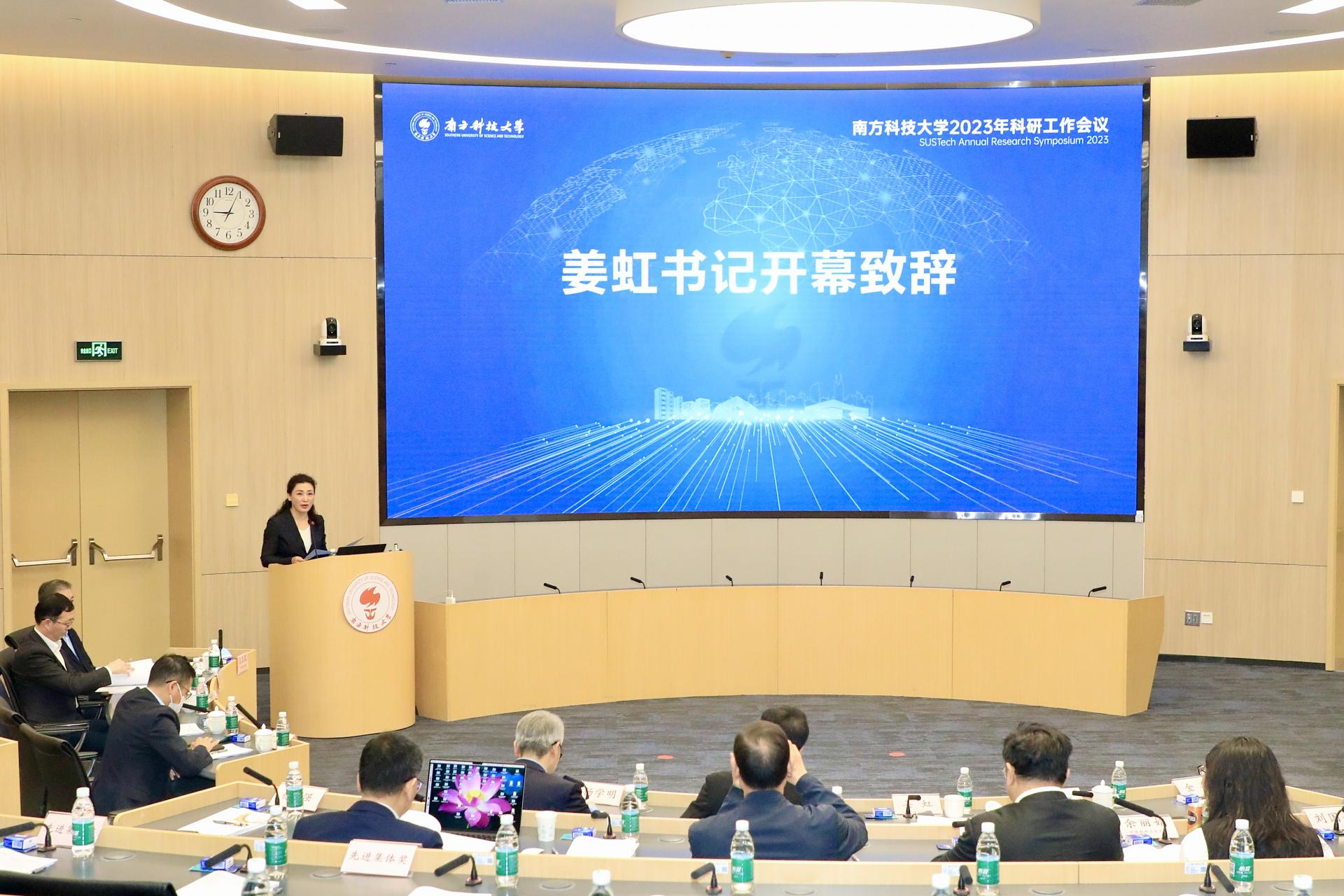
In her opening remarks at the symposium, Chairperson Hong JIANG emphasized SUSTech’s unique position as the only “Double First-Class” university in Shenzhen, and noted its close alignment with the strategic needs of the Shenzhen Pilot Demonstration Zone, the Guangdong-Hong Kong-Macao Greater Bay Area (GBA), and the country.
Highlighting the University’s “3-3-5” strategy, she underlined SUSTech’s pioneering efforts in constructing large scientific platforms and devices, such as the Quantum Science Center of the Guangdong-Hong Kong-Macao GBA and the X-Ray Free-Electron Laser facility.
She acknowledged the proactive role of faculty members and experts in developing these research and innovation platforms, utilizing superior resources for cutting-edge exploration, and achieving high-level and high-quality scientific research outcomes.
In 2023, SUSTech achieved much success in publishing high-level papers, undertaking major scientific research projects, receiving noteworthy scientific and technological awards, and facilitating the transformation of scientific and technological achievements.
Looking ahead, Chairperson JIANG outlined the University’s commitment to establishing a comprehensive scientific research system, integrating organized scientific research with an independent Process Intelligence (PI) system. This aims to bolster original and leading scientific and technological research, contributing significantly to the country’s modernization drive.
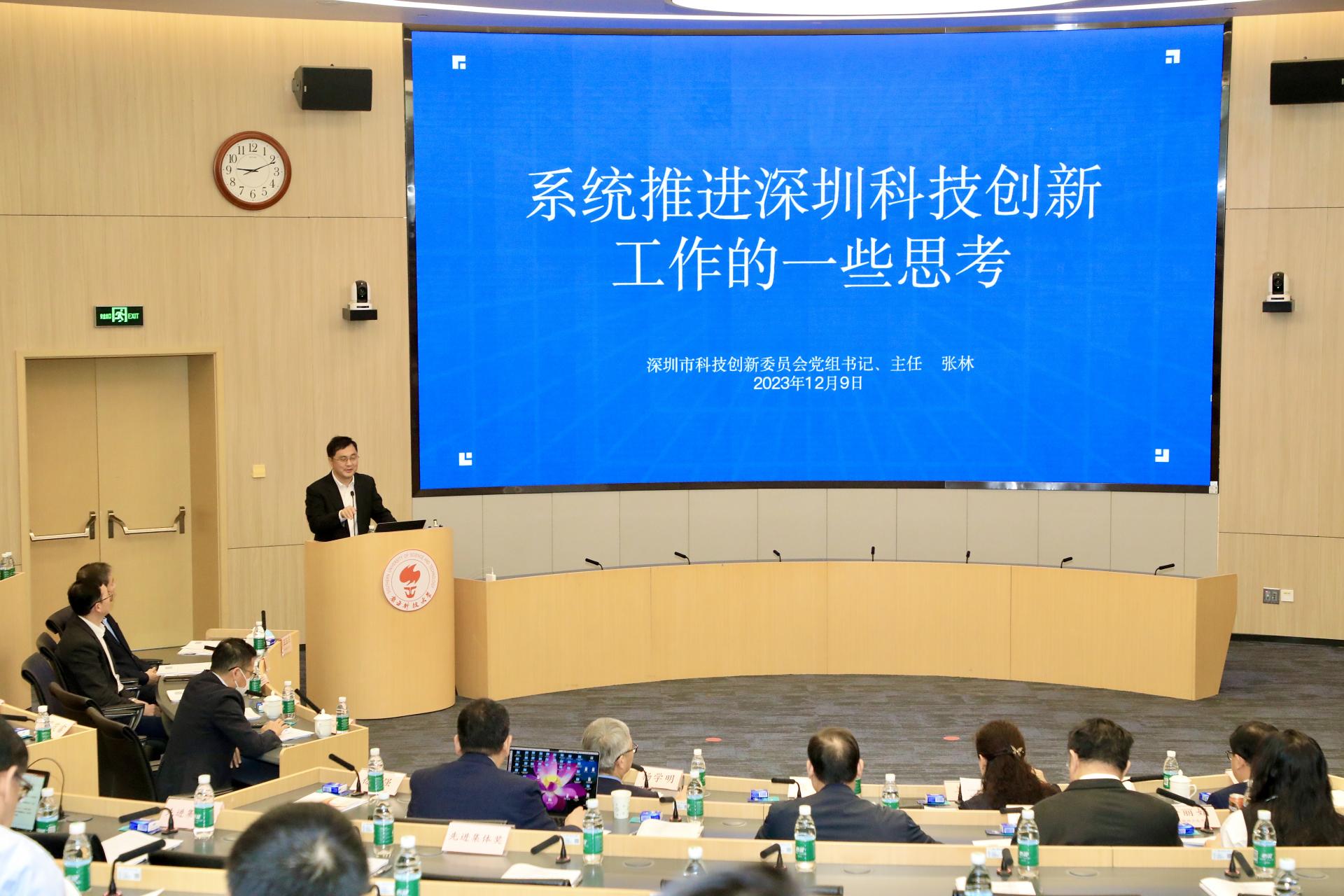
Lin ZHANG presented a special report that delved into the development history of the world’s five science centers. It analyzed the relationship between science and technology, and the relationship between science and industrial centers.
Highlighting the distinctive features, strategic positioning, and future objectives of technological innovation in Shenzhen, he emphasized that the city strategically centers around the industrial chain. This involves configuring the innovation, capital, and talent chains to establish a global science center that aligns with the development of an industrial center in Shenzhen and the GBA.
He outlined the organizational model governing Shenzhen’s science and technology innovation endeavors, underscoring the imperative for basic research to explore and highlight originality, and apply impetus to navigate challenges.
As a key player in advancing strategic scientific and technological projects, Lin ZHANG envisions that SUSTech will continue achieving innovative milestones in scientific research and play a pivotal role in propelling the development of Shenzhen.

With the aim of promoting advancements in related fields to address major scientific and technological challenges, the symposium featured the inauguration of two newly established scientific research institutions by the University in 2023: the SUSTech Academy of Finance and Economics and SUSTech Institute for Biological Electron Microscopy.
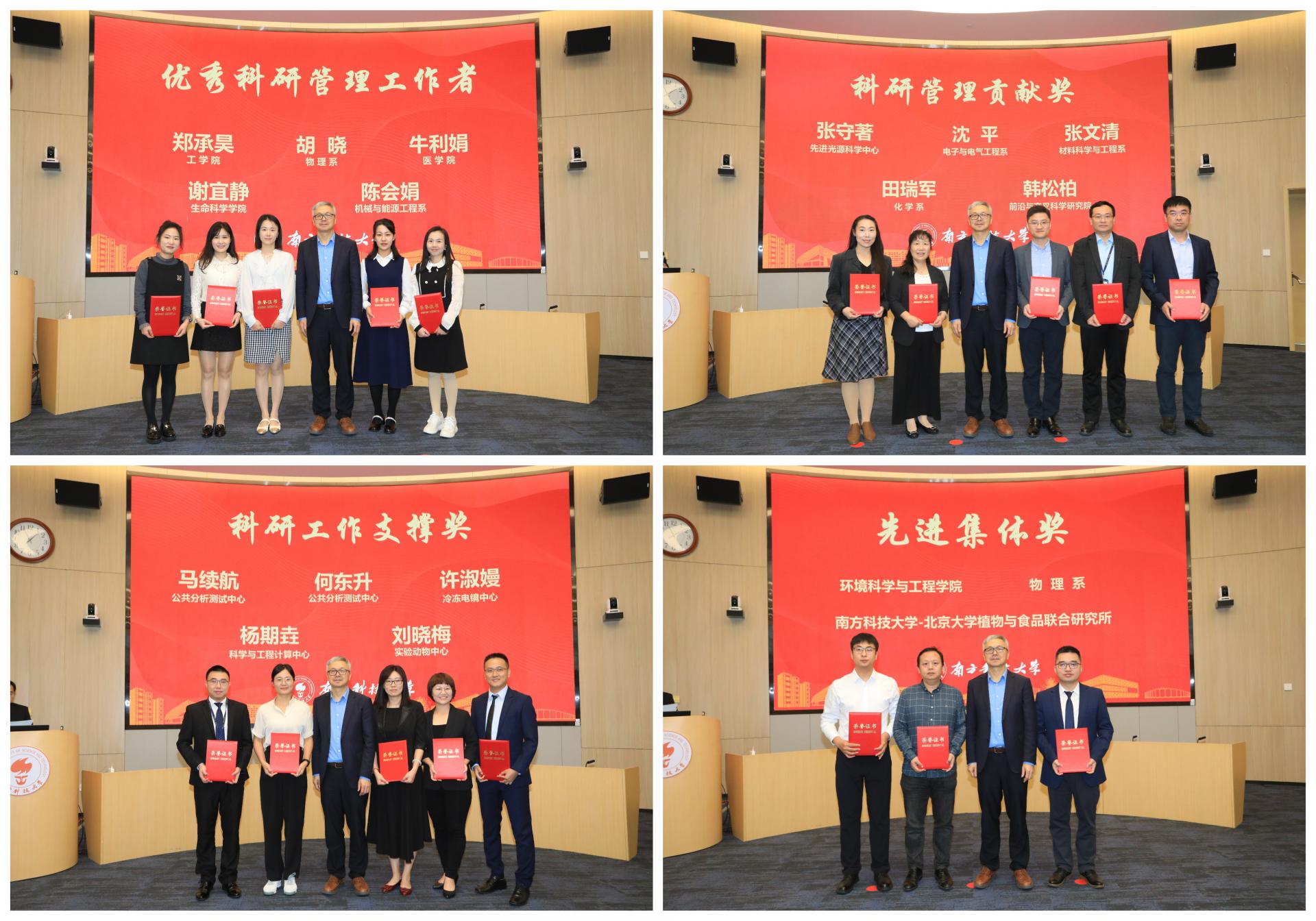
Additionally, Vice President Xueming YANG presented awards to individuals and teams in recognition of their important contributions to scientific research work and projects.
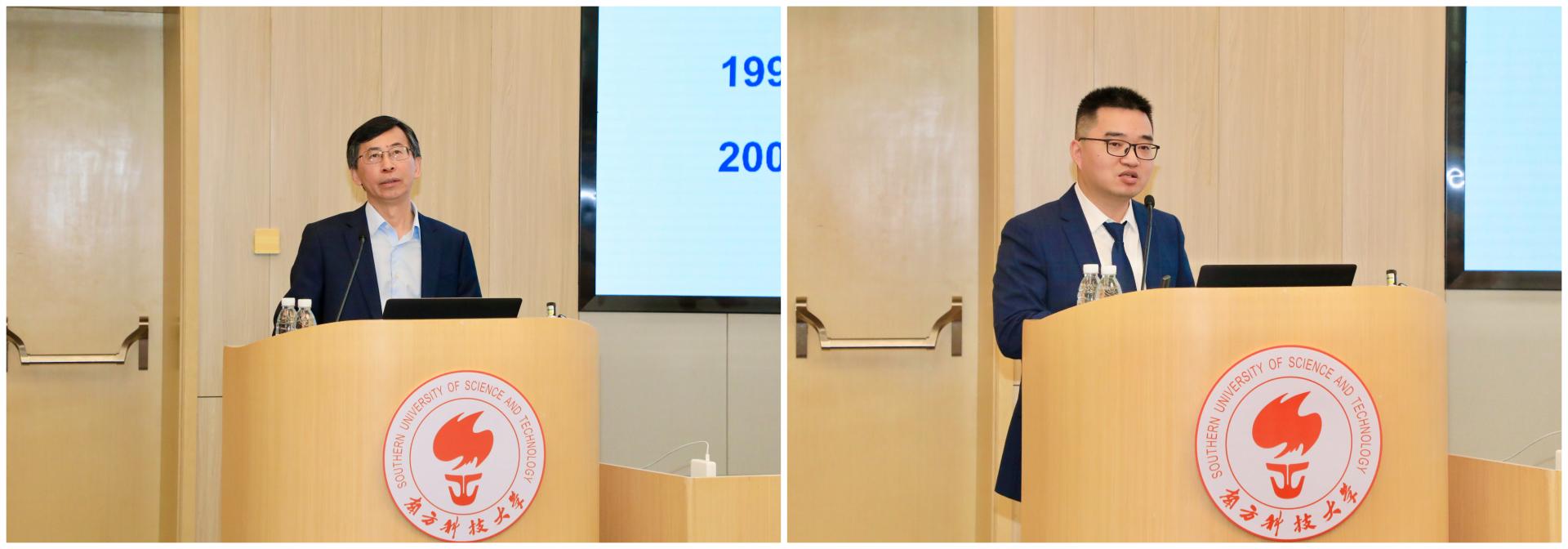
Speaking on behalf of the award recipients, Lian FENG, Deputy Head of the School of Environmental Science and Engineering, shared insights into his experience managing scientific research project applications.
He expressed a commitment to furthering the reform of the scientific research organization model and implementing strategies to advance original and cutting-edge scientific and technological research.
Shuhong YU, Dean of the College of Science, discussed his research work and perspectives on biomimetic materials. With an emphasis on strengthening organized scientific research, he outlined plans to deepen industry-education and science-education integration to enhance the capacity for scientific and technological innovation and independent talent training.
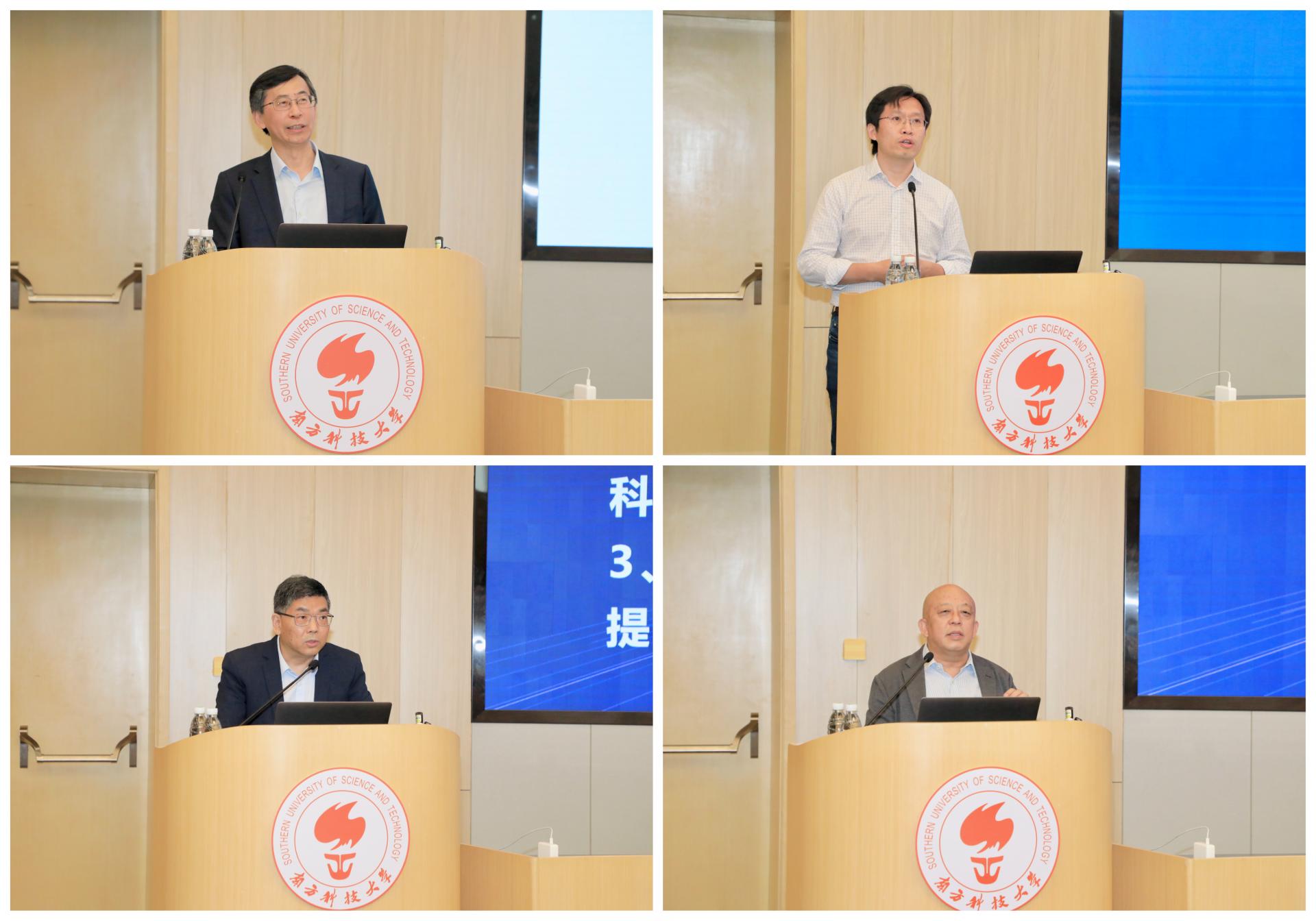
In an afternoon sub-forum, participants engaged in discussions centered on systematically advancing organized scientific research.
The focal points included optimizing the University’s scientific research environment and encouraging faculty members to acquire additional external resources. Their conversations revolved around key areas and methods for the development of scientific research in the field of liberal arts.
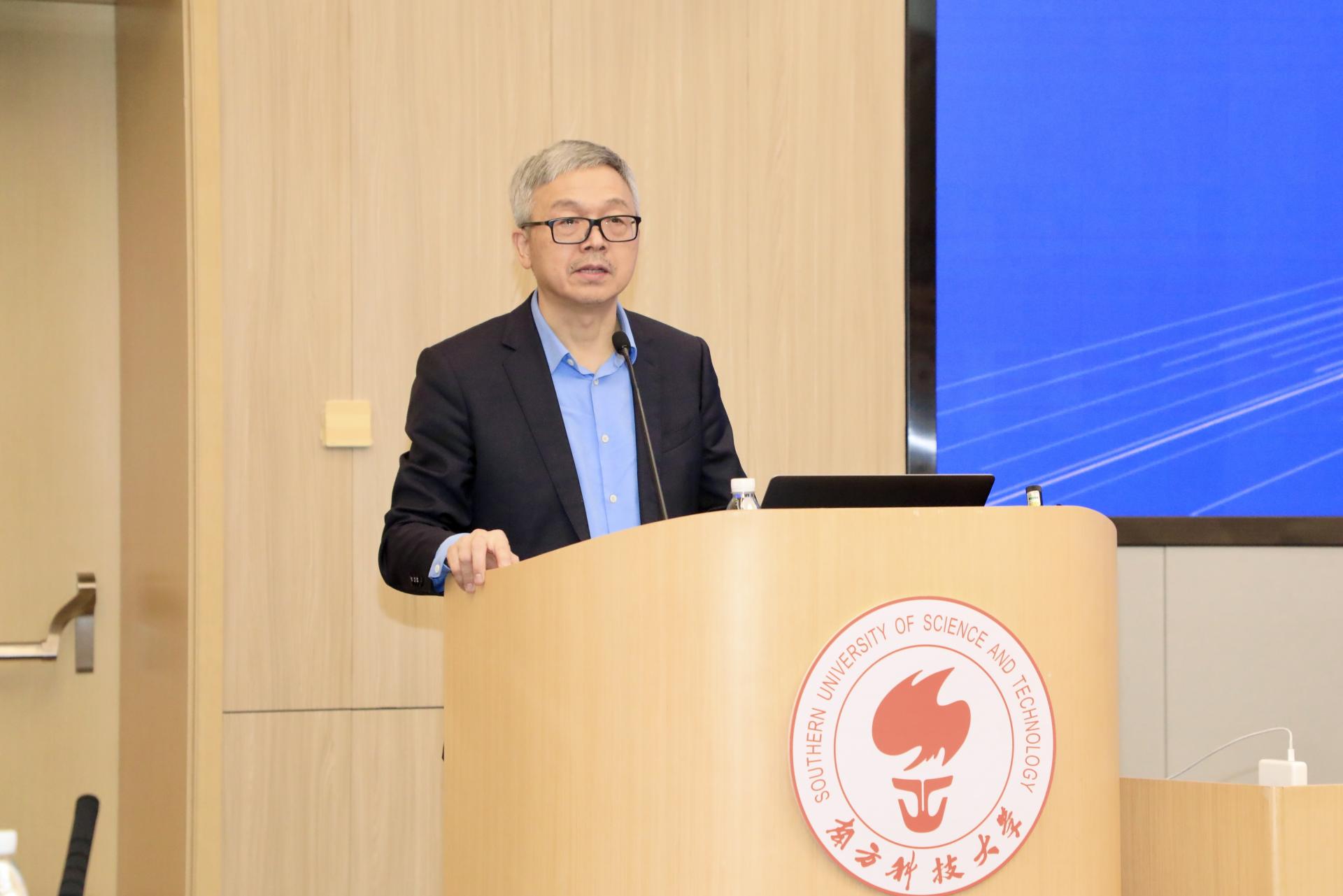
In the closing remarks at the symposium, Vice President Xueming YANG provided an analysis of SUSTech’s achievements in 2023 across various domains, including academic papers, approval of scientific research project applications, construction of scientific research platforms, university-industry and university-enterprise cooperation, intellectual property and transformation of achievements, laboratory safety management, amongst others.
Furthermore, he addressed the current challenges within the University’s scientific research work and proposed solutions. Emphasizing the need for efficient and rational utilization of scientific research funds, Vice President YANG urged all faculty members to confront challenges head-on, identify opportunities, and strive for scientific and technological breakthroughs.
He underscored the significance of prioritizing laboratory safety management, advocating for continuous improvement by establishing a comprehensive laboratory safety management system.
Proofread ByYingying XIA, Yimin WU
Photo ByXuan WANG